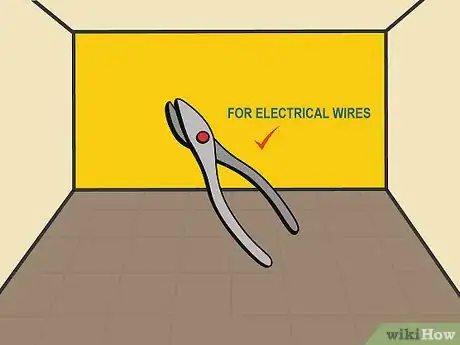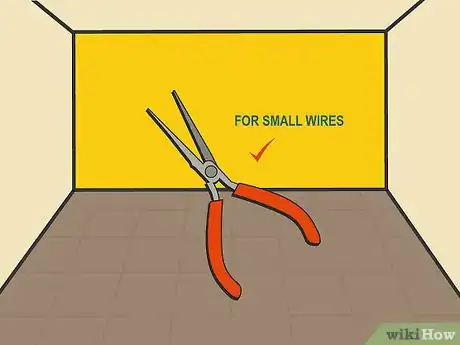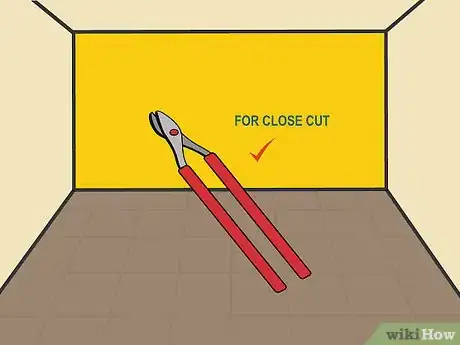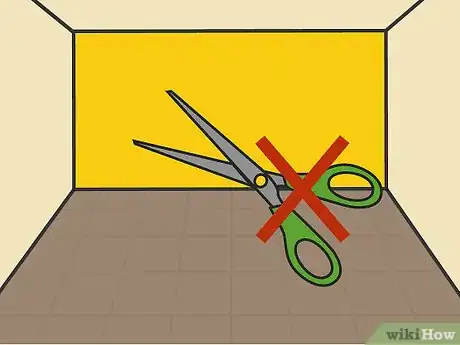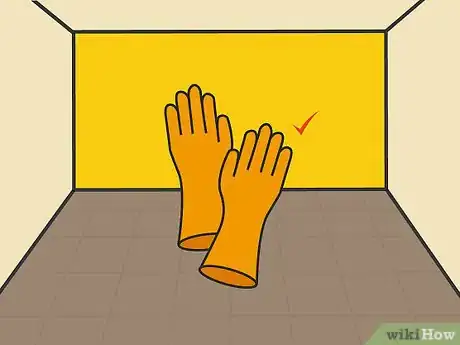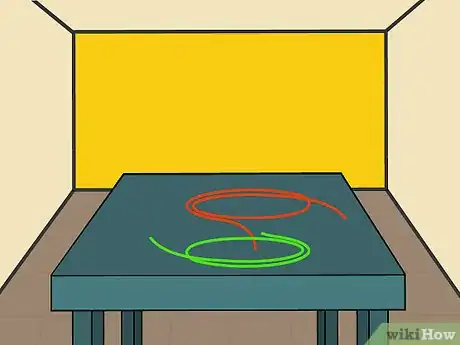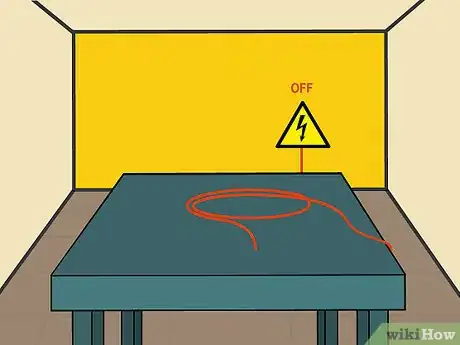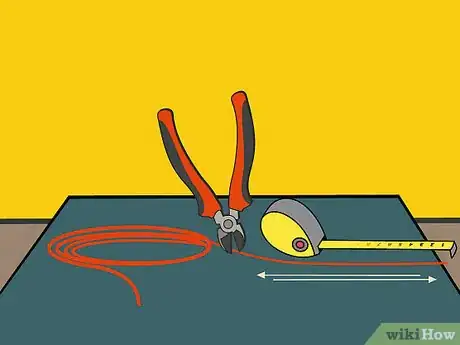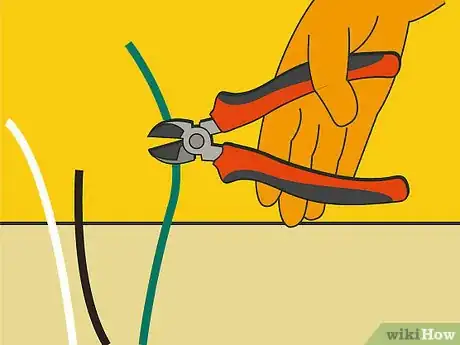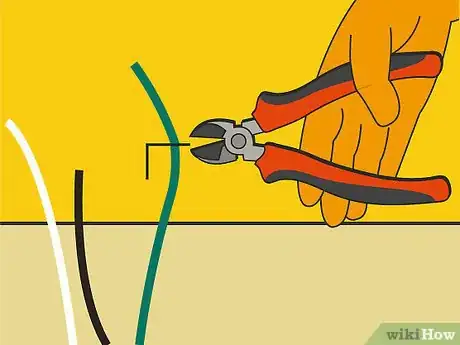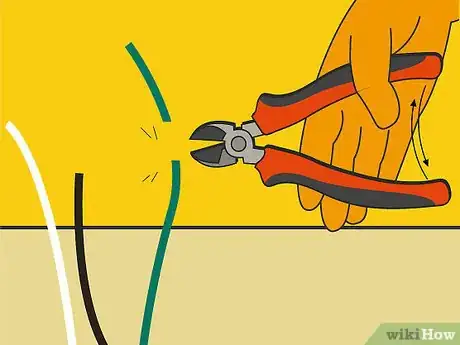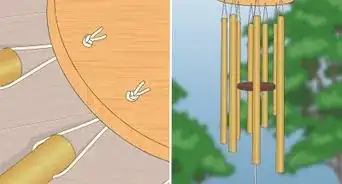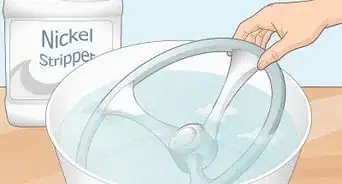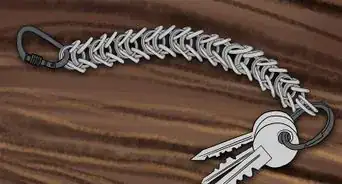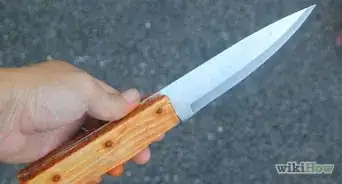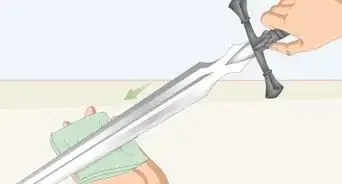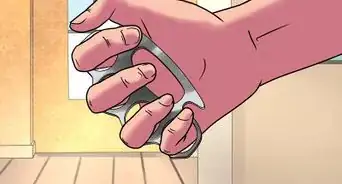This article was co-authored by Ryaan Tuttle. Ryaan Tuttle is a Home Improvement Specialist and the CEO of Best Handyman, Inc. in Boston, Massachusetts. With over 17 years of experience, he specializes in building home service businesses, focusing on creating scalable and efficient brands. With the help of his global team, the companies have achieved over 10+ million in sales and received recognition through magazine features, and enjoy partnerships with wikiHow and Jobber field service software. Boston Magazine and LocalBest.com have named Best Handyman Boston the Best Handyman in Boston. Ryaan holds Construction Supervisor and Home Improvement Contractor Licenses.
There are 8 references cited in this article, which can be found at the bottom of the page.
This article has been viewed 103,840 times.
With the right tool and cutting technique, you can easily cut wire of all shapes and sizes. For instance, use Lineman’s pliers to cut electrical wires, or use diagonal cutting pliers for an all-purpose choice. Make sure you put on safety glasses to prevent flyaway wires. Align the wire with the cutting part of your tool, and push down with gentle but firm pressure to make your cut.
Steps
Choosing a Cutting Tool
-
1Use Lineman’s pliers to splice or cut electrical wires. Lineman’s pliers have their cutting device on the side, and they are used for many different construction and electrical jobs. If you need to grip, strip, or cut any sort of electrical wire, this is the safest choice.[1]
- Lineman’s pliers are also known as “side cutting” pliers.
-
2Select long-nose pliers if you are cutting a small-gauged wire. Long-nose pliers have a slim, pointed end, and the ends of the pliers may be either straight or bent. These are often used to reach small wires or get into awkward places. Use these if you are cutting 8- to 24- gauge wire.[2]
- Since they have a narrow tip, long-nose pliers also work great to bend loops into wires and attach multiple wires together.
- If you are cutting wire for a jewelry project or trimming guitar strings, this may be a good option.
Advertisement -
3Go with diagonal cutting pliers for a standard, all-purpose option. If you don’t have many tools but need a basic wire-cutter, this is the tool for you.[3] Diagonal cutting pliers have a sharp, rounded tip, making them great for stripping and cutting wire. You can use these for nearly any type of wire.[4]
- Diagonal cutting pliers are also widely used for removing pins and nails as well.
- If you want to cut a wire hanger, for example, this is a good option.
- Diagonal pliers are also called "dikes."[5]
-
4Try end-cutting pliers if you want to make a close cut. End-cutting pliers have a short, stunted tip, which works great for trimming wire without taking much off the end. These work great for projects where you don’t have much wire left over or if you need to splice 2 wires close together.[6]
- You can also use end-cutting pliers to cut nails and rivets.
-
5Avoid using scissors to cut wire. It is best to use a wire cutter or plier hand tool rather than using scissors or a blade. Even a sharp pair of scissors may not cut through wire without damaging the internal metal.[7]
- It is also easy to slip and cut yourself when cutting wire with a pair of scissors, since the blade may not grip the wire as well as a set of pliers.
Setting up the Workspace
-
1Wear safety glasses to protect against flyaway pieces. While you are snipping and stripping wire, pieces of the coating or the wire can fly up and pierce your eye. To prevent this, always put on safety glasses or goggles to cover your eyes.[8]
- If you'd like, you can also wear protective gloves to prevent poking your fingers with the wires. While this is not required, it can be helpful if cutting lots of wire at the same time.
-
2Put your wire on a flat work surface so you can stand comfortably. Place the object you are working with on a table or countertop. You want to stand comfortably without having to bend forward or backward when you make your cuts. This way, you have less chance of injuring yourself.[9]
- If you are leaning forward or backward and happen to lose your balance, you have a greater chance of hurting yourself with your tool or hitting your head.
-
3Shut down the power source if you have one before snipping any wires. If you are cutting electrical wires, audio wires, or computer wires, be sure to power down your device before you get started. If your device is still on, you could get shocked as you make your snips, or your wires can get damaged.[10]
- For instance, if you are cutting the wires in your computer, make sure the computer is powered off before you begin.
-
4Unravel the wire from the spool if cutting new wire. If you are cutting a fresh piece of jewelry wire, barbed wire, or electrical wire, for example, find the end of the wire and pull it off of the spool to your desired length.[11]
- This way, you can have a smaller piece of wire to size and shape as needed.
Making Cuts
-
1Ensure your tools are clean, sharp, and in good condition. If the blade of your tool is dull or if there is a lot of rust, the tool may not cut the wire correctly. Also, wipe down your tool with a clean cloth before you get started. If your pliers or wire cutters are dirty before you use them, this can cause you to slip up as you make the cut. If your tools are not in proper working condition, do not use them.[12]
- Additionally, apply a drop of oil to your tool every 1-3 weeks to keep them in good condition. The oil makes the hinge work better over time.
-
2Grip the handles of your tool properly and securely. Hold the pliers in your dominant hand so your thumb sits on top of one end of the handle and your other fingers fit around the other end. This helps you control the tool when making your snips.[13]
- If you hold the tool incorrectly, you can slip when you make your cut, injuring yourself or damaging the wire.
-
3Bring the tool to your wire where you want to make your cut. Open the handle of your tool all of the way, and place your wire at the inner snipping section of your pliers or cutters. Place the wire in your tool so the spot you want to snip is exactly centered with the tip of your tool.[14]
- The inner snipping section is slightly different depending on your tool. For instance, diagonal cutting pliers will have a diagonally-shaped blade.
-
4Make your cut at a right angle so you don’t damage the wire. For a clean, even cut, position your tool at a right angle after you bring the tool to the wire. This way, the blade of your plier or wire cutter can easily make a clean cut.[15]
- If you do not cut the wire at a right angle, you may damage the wire and it may not work any longer.
-
5Apply force gently onto the handles to snip the wire. When you cut wire, it’s best to slowly and gradually make your cut. Squeeze both sides of the handle together gradually so you do not use too much force. As you do this, avoid rocking your tool from side to side or bending the wire.[16]
- If you cut the wire too forcefully, the tail of the wire may fly up into the air.
- If the wire does not cut entirely with 1 snip, open the handle of your tool and make another cut at a right angle.
Expert Q&A
-
QuestionHow do you cut wires without a wire cutter?
 Ryaan TuttleRyaan Tuttle is a Home Improvement Specialist and the CEO of Best Handyman, Inc. in Boston, Massachusetts. With over 17 years of experience, he specializes in building home service businesses, focusing on creating scalable and efficient brands. With the help of his global team, the companies have achieved over 10+ million in sales and received recognition through magazine features, and enjoy partnerships with wikiHow and Jobber field service software. Boston Magazine and LocalBest.com have named Best Handyman Boston the Best Handyman in Boston. Ryaan holds Construction Supervisor and Home Improvement Contractor Licenses.
Ryaan TuttleRyaan Tuttle is a Home Improvement Specialist and the CEO of Best Handyman, Inc. in Boston, Massachusetts. With over 17 years of experience, he specializes in building home service businesses, focusing on creating scalable and efficient brands. With the help of his global team, the companies have achieved over 10+ million in sales and received recognition through magazine features, and enjoy partnerships with wikiHow and Jobber field service software. Boston Magazine and LocalBest.com have named Best Handyman Boston the Best Handyman in Boston. Ryaan holds Construction Supervisor and Home Improvement Contractor Licenses.
Home Improvement Specialist Use a cordless bandsaw or a metal grinder with a metal cutting blade in it.
Use a cordless bandsaw or a metal grinder with a metal cutting blade in it. -
QuestionTool to be used in cutting wire?
 Garrie NassauCommunity AnswerThe best options to cut wire are pliers and wire cutters.
Garrie NassauCommunity AnswerThe best options to cut wire are pliers and wire cutters. -
QuestionWhy can’t we use scissors for cutting a wire?
 Garrie NassauCommunity AnswerFor safety reasons, it is best to use a wire cutter or pliers hand tool to cut the wire. If you use scissors, they often cannot cut through wire correctly and you can damage the internal conductor or cause injury to yourself.
Garrie NassauCommunity AnswerFor safety reasons, it is best to use a wire cutter or pliers hand tool to cut the wire. If you use scissors, they often cannot cut through wire correctly and you can damage the internal conductor or cause injury to yourself.
Things You'll Need
- Pliers or wire cutters
- Safety glasses
- Work surface
- Clean cloth
- Extra wire
References
- ↑ https://www.ccohs.ca/oshanswers/safety_haz/hand_tools/pliers.html
- ↑ https://www.ccohs.ca/oshanswers/safety_haz/hand_tools/pliers.html
- ↑ Ryaan Tuttle. Home Improvement Specialist. Expert Interview. 30 July 2021.
- ↑ https://www.ccohs.ca/oshanswers/safety_haz/hand_tools/pliers.html
- ↑ Ryaan Tuttle. Home Improvement Specialist. Expert Interview. 30 July 2021.
- ↑ https://www.ccohs.ca/oshanswers/safety_haz/hand_tools/pliers.html
- ↑ https://www.ccohs.ca/oshanswers/safety_haz/hand_tools/general.html
- ↑ https://www.ccohs.ca/oshanswers/safety_haz/hand_tools/general.html
- ↑ https://youtu.be/wsz7hCumPvQ?t=10s
- ↑ https://www.ccohs.ca/oshanswers/safety_haz/hand_tools/general.html
- ↑ https://youtu.be/wsz7hCumPvQ?t=12s
- ↑ https://www.ccohs.ca/oshanswers/safety_haz/hand_tools/general.html
- ↑ https://youtu.be/wsz7hCumPvQ?t=19s
- ↑ https://youtu.be/b9aueHA3J7A?t=45s
- ↑ https://www.ccohs.ca/oshanswers/safety_haz/hand_tools/pliers.html
- ↑ https://youtu.be/b9aueHA3J7A?t=1m6s
About This Article
With the right tools and cutting technique, you can cut any wire. Use diagonal cutting pliers to cut any kind of wire. If you have a choice of tools, use lineman’s pliers to cut or splice electrical wire, and long-nose pliers for small-gauged wire. If you’re cutting live wire, make sure the electricity’s off so you don’t electrocute yourself. Whichever wire you’re cutting, make a straight cut, directly across the wire with your cutters. Squeeze the handles gently so the end of the wire doesn’t fly into the air and hit you. If the wire doesn’t cut through in one go, just open the pliers and try again. For more tips, including how to keep your pliers clean and sharp, read on!
